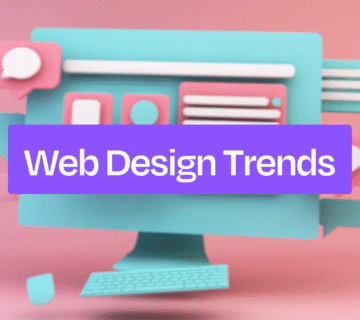Introduction
Web design is one of the subject areas of Artificial Intelligence that is transforming all creative areas. Today, AI is a source of innovation, creativity, and functionality. It also reduces the effort of web construction, testing and maintenance. The combination of human smartness and AI productivity forms smarter online experiences. A Web Designer in Michigan recently reported on the effects of automation in terms of saving design time and improving accuracy. The AI tools are now predicting user needs and enhancing interface design. The increasing trend suggests that AI will soon automate all aspects of web creation. The professionals of the USA think that this change will enable websites to become more effective and convenient. Let’s learn more about AI.
How Artificial Intelligence Is Transforming Web Design
AI alters web design and web management. It automates the repetitive activities and provides uniformity. Intelligent devices adapt the layouts to the screens of devices and the habits of users. Designers are no longer concerned with the details of coding. AI examines the behaviour of visitors to recommend improved visual patterns. It recognises trends and future design trends. This can be used to develop designs that capture attention quickly. Website construction is quicker and smarter. Designers can provide a customised experience to users in real-time. AI enhances web development that is more strategic, efficient and user-oriented.
The Role of Machine Learning in Creative Layouts
Machine learning helps designers understand how users interact with web elements. It studies clicks, movements, and viewing time. Algorithms use this data to recommend design improvements. Designers can test several layouts simultaneously and select the best version. Machine learning reduces human error and saves time. It also predicts design success based on user behaviour. Creative professionals use it to refine colour schemes and typography. AI systems keep learning from every new interaction. The results are designs that match both user taste and brand personality. This process ensures more consistent and appealing online experiences.
Predictive Design and User Behaviour Analysis
Predictive design helps designers anticipate user needs before they act. It uses past data and browsing habits to forecast preferences. AI tools can auto-adjust elements like menus, buttons, and banners. This creates a seamless experience for every visitor. Predictive models identify the best time to display offers. They also help determine which content performs best in terms of engagement. Designers rely on data rather than assumptions. This results in higher conversion and better retention. Predictive analytics will continue guiding creative decisions. It helps bridge the gap between design intuition and factual user data effectively.
The Impact of AI on Website Personalisation
AI has made web personalisation faster and smarter. It analyses user profiles to provide personalised content instantly. Every visitor gets a tailored experience based on their behaviour. Websites can adapt colour, layout, and content automatically. This increases user engagement and satisfaction. AI personalisation also effectively supports marketing goals. It enables more targeted and timely content delivery. Designers utilise automation to maintain a consistent brand identity across different versions.
Automation in Coding and Development Tasks
AI tools automate a significant portion of website coding. Designers can now generate complex code through natural language prompts. Automated systems detect errors before deployment. This ensures better performance and fewer bugs. The time saved allows for a greater focus on creativity. Automation also improves collaboration between designers and developers. Smart systems update existing code based on user feedback. They can efficiently integrate APIs and plugins. Many platforms now use auto-testing for speed optimisation. This balance between design and automation creates robust websites. AI reduces human effort while consistently maintaining high-quality digital experiences.
The Rise of Voice User Interfaces in Web Experiences
Voice interfaces are now integral to current design strategies. Artificial intelligence voice applications help users navigate websites with ease. Designers are now designing layouts that are voice command-friendly. The innovation enhances accessibility to everyone. Smart speakers and mobile assistants drive this trend. The optimisation of voice gives a fast reaction and satisfaction to the user. Voice technology is used by businesses to enhance customer service interactions. The voice systems of AIs are also accustomed to the accents and habits of their users. Trust and convenience are developed through this adaptation. The visual and voice design in future websites will be integrated effectively. The next step in the development of web interaction is voice integration.
How Data Analytics Shapes Design Decisions
Data analytics has become a vital component of modern web development. AI gathers and analyses massive user data. It shows design-inspiring trends and performance insights. This data is used to perfect the structure and navigation by designers. Analytics will allow us to determine which visuals will be the most popular with users. It also determines the interaction on individual pages. Such feedback ensures that designs align with real-world user requirements. Artificial intelligence analytics substitutes the use of guesswork with decisions made on facts. Performance insights can be measured for each project. Using data, designers create websites that are efficient and effective. The current AI-powered creativity is based on data-driven design.
Benefits of AI Integration for Web Developers
AI integration improves workflow efficiency and accuracy. Developers can easily automate testing, coding, and bug detection. AI predicts performance issues before they appear. This reduces downtime and increases productivity. Automation also supports smoother collaboration between teams. AI-driven frameworks generate optimised code for various devices. Developers benefit from predictive maintenance alerts. This ensures websites stay updated and secure. AI enables better scalability for growing businesses. Teams save time and deliver faster results. Overall, AI integration enhances development quality while significantly reducing costs. This advancement defines the next generation of web technology.
The Importance of Human Creativity in the AI Era
AI cannot completely replace human creativity. Designers bring emotional intelligence and intuition to projects. Machines handle data, but people understand emotions. Human insight gives meaning to design beyond aesthetics. AI complements creativity by removing repetitive work. This balance allows deeper focus on storytelling. Designers use their imagination to connect with audiences. Human creativity gives design warmth and identity. It ensures digital spaces remain authentic and engaging. The future belongs to collaboration between machines and minds. Together, they create digital experiences that seamlessly blend logic and emotion.
Collaboration Between AI Systems and Designers
AI and designers now collaborate to achieve better outcomes. Systems provide insights while humans refine creative direction. AI handles data analysis and pattern recognition quickly. Designers translate those patterns into appealing visuals. Collaboration enhances innovation in every project. This teamwork reduces time while improving results. AI assists with real-time feedback during the design process. Designers focus on strategy and experience building. Together, they achieve a balance between logic and artistry. Collaboration ensures that technology serves human creativity effectively. The partnership defines the future of intelligent and beautiful digital design.
The Perspective of Web Designer in Michigan Professionals
Experts across the USA share valuable insights about AI’s influence. A Web Designer in Michigan explained how AI tools personalise user journeys. These professionals believe that AI will guide design decisions in real-time. They value data-backed creation but emphasise the ethical responsibility of design. AI enables them to deliver faster without losing originality. American designers focus on merging human creativity with advanced technology. They believe successful web design blends logic and empathy. This perspective reflects how the USA leads in digital innovation. AI-driven design is shaping the next creative frontier globally.
Conclusion
AI will continue to transform the world of web design. It leads to increased creativity, reduced workload, and greater accuracy. The current designers utilise AI to create user-oriented designs that are informed by data. Companies receive quicker outcomes and interaction. Collaboration between human designers and AI systems ensures progress. USA experts predict a rise in adaptive, learning-based interfaces. Creative firms like Saaddesigner show how innovation meets precision.





No comment